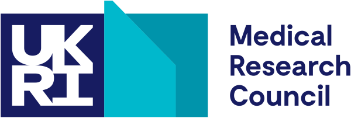Repurposing approved drugs as potent antiviral combinations to treat COVID-19 disease
CELT's part in this research is now complete. This project was under investigation and funded by the Medical Research Council (MRC), to support a collaboration between the Queens University Belfast, Centre of Excellence for Long-acting Therapeutics (CELT) and University of Oxford investigators. The project’s aim was to validate a drug screening pipeline platform for rapid but robust progression of drug combinations against Sars-CoV-2 through the pre-clinical pipeline including in vitro analysis, in vivo efficacy studies and pharmacometrics.
Project overview
Since its emergence in 2019, SARS-CoV-2 has had a devastating impact on most countries around the world. There was a global movement to develop vaccines, which worked at an unprecedented rate, to help prevent contracting the virus. Some drugs have also been shown to have therapeutic effects in treating the covid-19 virus.
Most of the drugs that have been effective in treating the virus have been antivirals and immunomodulators, with r and monoclonal antibody cocktails being the only successful antiviral therapies, so far. This project aimed to find other novel drug combinations with antiviral activity against SARS-CoV-2 and therefore covid-19.
The project was a collaboration of experts from three research institutions at Queen’s University Belfast, University of Liverpool and University of Oxford. The starting point was screening 140 drugs that are known to have antiviral activity against SARS-CoV-2 to find combinations that enhance those drugs’ antiviral potential. Once the most effective combinations were identified, robust in vitro and in vivo trials began to validate each combination’s potential. The team then recommended potential combinations to progress to clinical trials.
An additional stage of the project entailed screening two other large drug libraries that haven’t been screened yet, so that back-up drug combinations are identified. This will ensure a pipeline of antiviral drugs against SARS-CoV-2 for the future.
CELT's objectives
- Validate a drug screening pipeline platform for robust and rapid progression of combination drugs from identification to pre-clinical efficacy confirmation
- Identify novel drug combinations with enhanced antiviral activities against SARS-CoV-2 compared to the respective single drugs from a custom 140 drug library
- Investigate the propensity for development of drug resistant virus mutants
- Exploit our drug screen platform for non-biased screening of a custom large-scale unexplored drug library (>4000 drugs) for novel combination antiviral treatments for COVID-19 to ensure a pipeline of promising therapeutics for the future
- Determine the potential to exploit drug combination hits in clinical trial by pharmacometric modelling in silico
- Determine the therapeutic potential of the top ranked (10 max) drug combination hits in our WD-PAEC/SARS-CoV-2 infection model
- Determine the antiviral potential of the top ranked (10 max) drug combination hits in vivo in our rodent models of SARSCoV-2 infection.
Findings
All of the above objectives have been successfully completed.
The overall aim of the project was to identify novel drug combinations with enhanced antiviral activities against SARS-CoV-2, the causative agent of COVID-19 disease. Several drug combinations that were effective against SARS-CoV-2 were identified both in vitro at Queen's University Belfast and in animal studies at the University of Liverpool, with further combinations generated using an existing drug library alongside in vitro screening techniques.
- Successful in vitro combinations underwent pharmacometric modelling by the CELT modelling group to simulate plasma-concentration time profiles in patient populations at dose regimens with an acceptable safety profile
- Pharmacokinetic simulations for the most promising combinations showed that 90% of patients would achieve efficacious trough plasma concentrations at approved doses
- Modelling of in-vitro efficacy data was also able to successfully identify the presence of synergistic effects in the combinations
- Subsequent in vivo models of infection generated robust data suggesting additive or synergistic effects when the combinations were dosed orally.
Project implications
As well as the direct benefits through the achievements above, the project's additional benefits include:
- Although Covid is not in the public's consciousness to the extent it previously was, it is still a pressing global health threat. This project has identified multiple potential treatments that are effective against SARS-CoV-2 and has further developed knowledge and methodologies that can be used to rapidly screen for treatments for other, non-covid related, viruses
- Although this project focused on treatments for SARS-CoV-2, the knowledge gained can help develop treatments against a wide variety of viruses in an efficient and cost effective way
- Improved relationship between the partners
- The three academic partners developed a close and effective relationship that made this complex and important project a success. This relationship will create opportunities for future collaboration between these institutions in this field and in others. The collaborative nature of the project demonstrated how expertise across all areas of the drug development pipeline (in vitro screening, in vitro cell work, in vivo studies, pharmacometric simulations) can combine in unison to enable an efficient outcome
- Valuable insight was gained into the commercialisation of drug treatments, and the options for treatment delivery in low- and middle- income countries to ensure the greatest social and economic benefits at a global level.
Next Steps
- Further assessment of tolerability of the identified drug combinations, particularly at higher doses which may be required to provide coverage against development of resistance
- Preparation for assessment of clinical efficacy of the combinations identified.
Awarding body
